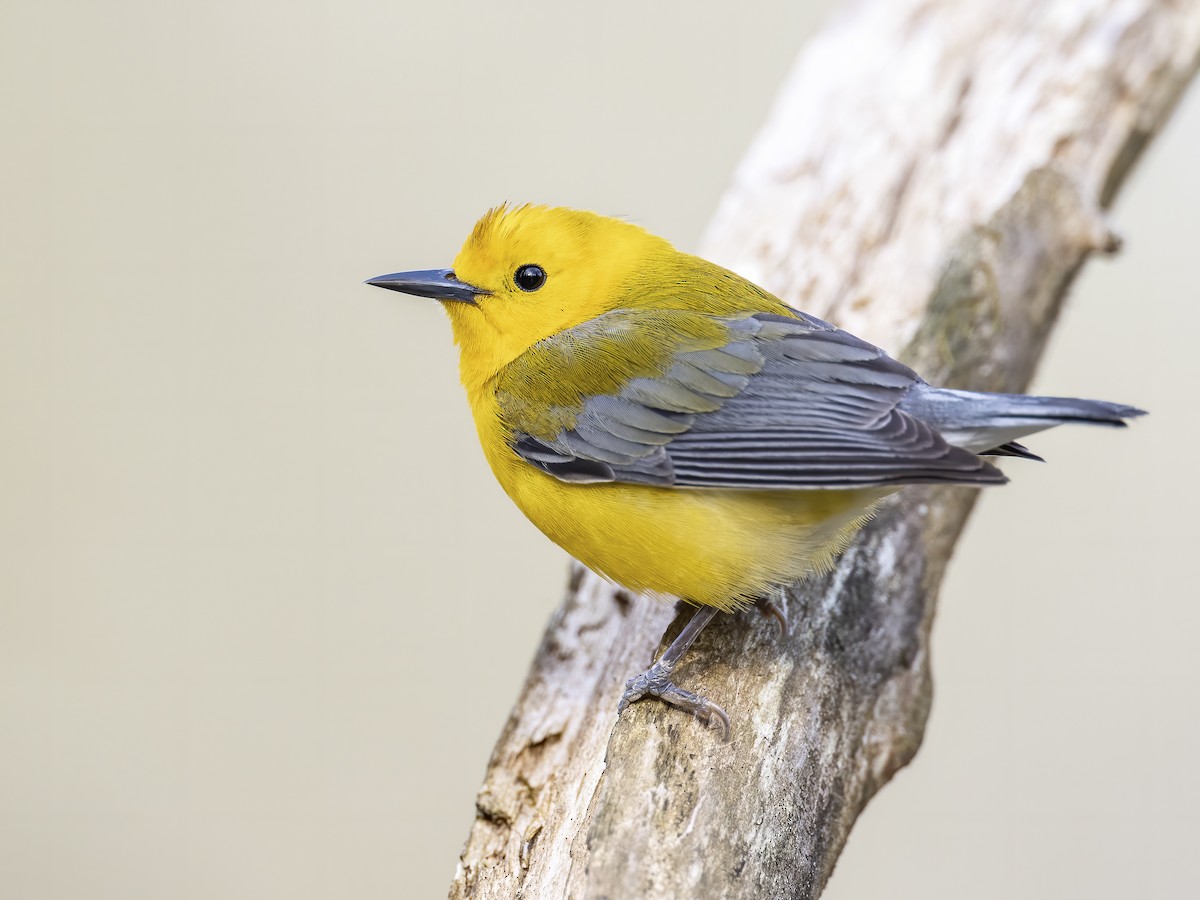Kentucky hosts a variety of yellow birds throughout the year, including American Goldfinches, warblers, orioles, and tanagers, which are particularly abundant during spring and summer.
To assist you in identifying these yellow birds in Kentucky, this comprehensive guide provides images, identification details, recordings of their songs, as well as information about their migration patterns.
Warblers, orioles, and tanagers make up the majority of yellow birds in Kentucky, with some female individuals exhibiting distinct differences from their male counterparts.
By utilizing the information within this guide, identifying yellow birds in Kentucky will become significantly easier. The birds are listed according to their frequency of sightings in ebird checklists during the spring and summer months of May and June.
Here is a list of yellow birds in Kentucky throughout the year:
1. American Goldfinch
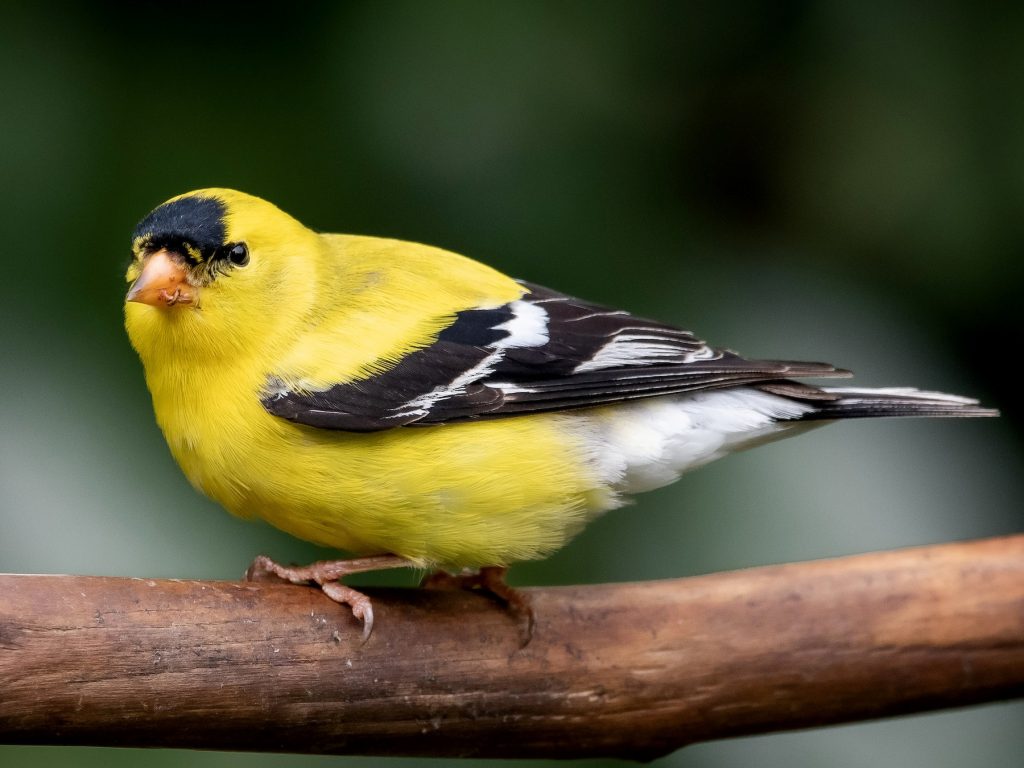
American Goldfinches can be observed in Kentucky year-round. They are present in 42% of summer checklists and 33% of winter checklists submitted by bird enthusiasts in the state.
These birds are highly popular, especially during spring when the males display vibrant yellow and black plumage. In contrast, the females exhibit a more subdued brown coloration, as do the males during winter.
Scientific name: Spinus tristis
Size: 4.3-5.1 inches (11-13 cm)
Weight: 0.4-0.7 ounces (11-20 g)
Wingspan: 7.5-8.7 inches (19-22 cm)
American Goldfinches can be found across most of North America, and while they are typically resident year-round, those that breed in Canada and the Midwest migrate to southern US states for the winter.
You can spot American Goldfinches in weedy fields and overgrown areas, where they forage on sunflower, thistle, and aster plants. They are also commonly found in suburban areas, parks, and backyards.
If you wish to attract American Goldfinches to your backyard, consider planting thistles and milkweed. They visit various bird feeders and prefer sunflower and nyjer seeds.
Fun Fact: Cowbirds are unable to convince American Goldfinches to raise their young, as the finches’ vegetarian diet does not meet the nutritional needs of cowbird chicks, resulting in their demise within a few days.
2. Yellow-rumped Warbler
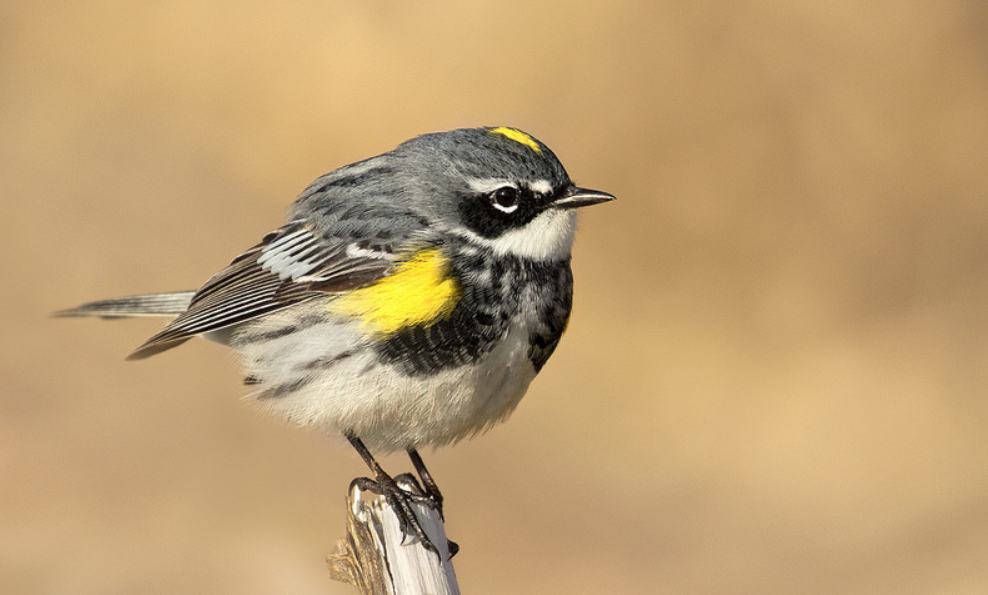
Yellow-rumped Warblers can be found in Kentucky during winter, with their numbers increasing during migration in April and October. They are recorded in 8% of winter checklists and up to 33% of checklists during migration.
These warblers exhibit gray plumage with splashes of yellow on their face, sides, and rump, as well as white markings on their wings. Females may have a slightly brownish coloration, while winter birds appear paler brown with bright yellow rumps and sides, transitioning back to gray and yellow during spring.
Scientific name: Setophaga coronata
Size: 4.7-5.5 inches (12-14 cm)
Weight: 0.4-0.5 ounces (12-13 g)
Wingspan: 7.5-9.1 inches (19-23 cm)
Yellow-rumped Warblers primarily breed in Canada, the Rockies, and the Appalachian mountains. During migration, they can be observed in the Midwest before overwintering in southern and southwestern US states, as well as along the Pacific Coast, Mexico, and Central America.
These warblers are commonly found in coniferous forests, particularly during the breeding season. In winter, they frequent open areas with fruiting shrubs. Their diet consists mainly of insects during summer and migration, and shifts to fruit consumption, including bayberry and wax myrtle, during winter.
Yellow-rumped Warbler Song: [Audio recording]
Nests of Yellow-rumped Warblers are constructed by females using twigs, pine needles, and grass. The nests are held together with spiders’ webs and are typically located in conifer trees. They lay up to six eggs, which hatch after approximately two weeks, and the young leave the nest in two to two and a half weeks.
To attract Yellow-rumped Warblers to your backyard, provide them with sunflower seeds, suet, raisins, and peanut butter.
Fun Fact: Yellow-rumped Warblers form flocks numbering in the thousands during winter, and they can display aggression towards other bird species that venture too close.
3. Eastern Meadowlark

Eastern Meadowlarks, classified as a near-threatened species, can be spotted primarily during the breeding season in Kentucky. They are recorded in 15% of summer checklists and appear in 6% of winter checklists.
These medium-sized songbirds exhibit a bright yellow underside with pale brown plumage, adorned with black markings on their back. They possess a distinct black band across their chest.
Scientific name: Sturnella magna
Size: 7.5-10.2 inches (19-26 cm)
Weight: 3.2-5.3 ounces (90-150 g)
Wingspan: 13.8-15.8 inches (35-40 cm)
Eastern Meadowlarks are distributed across eastern US states throughout the year, with breeding populations also found in the Northeast and Canada. Following breeding, they migrate southward.
The arrival of spring in the East is often signaled by the melodious singing and display of Eastern Meadowlarks, although their near-threatened status is a matter of concern.
These birds can be found foraging on insects in grasslands and prairies, often forming large flocks during winter while searching for seeds.
Eastern Meadowlark Song: [Audio recording]
Nests of Eastern Meadowlarks are constructed on the ground and can feature impressive structures, including tunnels and roofs made from woven grasses.
Fun Fact: Eastern Meadowlarks are capable of producing over 100 different songs.
4. Common Yellowthroat
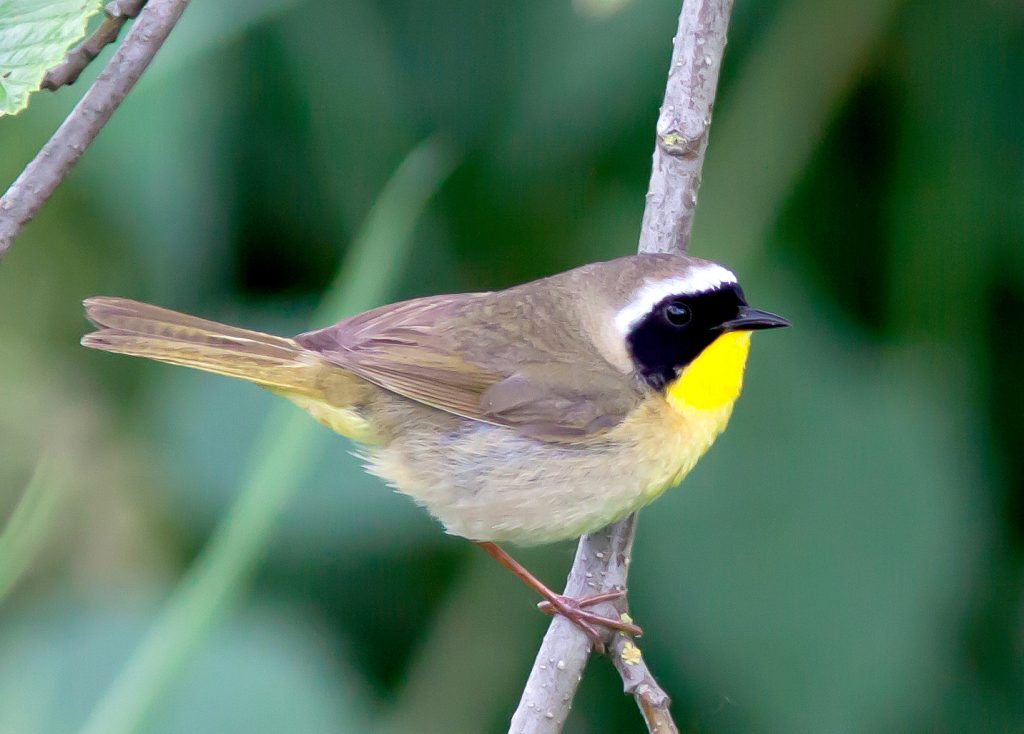
Common Yellowthroats are frequently observed during the breeding season in Kentucky, appearing in 22% of summer checklists.
These small songbirds display brownish plumage on their back and vibrant yellow underneath, along with long tails. Males feature black masks across their faces, while the intensity of yellow coloration can vary geographically, with some populations exhibiting a more olive hue.
Scientific name: Geothlypis trichas
Size: 4.3-5.1 inches (11-13 cm)
Weight: 0.3-0.3 ounces (9-10 g)
Wingspan: 5.9-7.5 inches (15-19 cm)
Common Yellowthroats breed across most of North America during the summer, excluding Alaska and northern Canada. Some individuals remain along the Gulf Coast and Pacific Southwest throughout the year, while others migrate southward for the winter.
These birds can often be found in marshy or wetland areas, as well as in brushy fields with dense vegetation, where they feed on insects.
Common Yellowthroat Song: [Audio recording]
Nests of Common Yellowthroats are constructed by females near the ground in marshy areas, utilizing reeds for support. The nests are made from grass, sedges, leaves, and other plant material, forming a cup-shaped structure. They lay up to six eggs, which hatch after approximately twelve days, and the young leave the nest in a similar timeframe.
To attract Common Yellowthroats to larger backyards, ensure the presence of dense vegetation and native plants that attract insects.
Fun Fact: The black mask displayed by male Common Yellowthroats serves as a signal to courting males, triggering aggressive responses when fake birds without masks are introduced, whereas birds lacking masks are ignored.
5. Cedar Waxwing

Cedar Waxwings are predominantly observed in Kentucky during the summer, appearing in 11% of checklists during this period. However, some individuals remain in the state throughout the year.
These elegant and social birds exhibit pale brown plumage on their head, chest, and crest, which transitions to gray on their back, wings, and tail. They possess a pale yellow belly, with bright yellow tips on their tail feathers. A narrow black mask surrounds their eyes, and their wingtips display a vibrant red hue.
Scientific name: Bombycilla cedrorum
Size: 5.5-6.7 inches (14-17 cm)
Weight: 1.1 ounce (32 g)
Wingspan: 8.7-11.8 inches (22-30 cm)
Cedar Waxwings breed in Canada before migrating to southern US states, Mexico, and Central America for winter. Some populations remain resident year-round in northern US states.
These birds can be found in berry bushes, woodlands, grasslands, towns, and along streams. Their diet primarily consists of fruit, but they also consume insects during the summer months.
Cedar Waxwing Call: [Audio recording]
Nests of Cedar Waxwings are constructed in trees using twigs, grass, hair, and other plant materials. The nests are lined with pine needles and soft grass. They lay up to six eggs, with an incubation period of approximately twelve days, and the young leave the nest after around sixteen days.
To attract Cedar Waxwings to your backyard, consider planting native trees and shrubs that produce small fruit, such as serviceberry, dogwood, juniper, winterberry, and hawthorn. Fruit can also be provided on platform feeders.
Fun Fact: Cedar Waxwings engage in a unique behavior of passing gifts between potential mates during courtship.
6. Female Summer Tanager
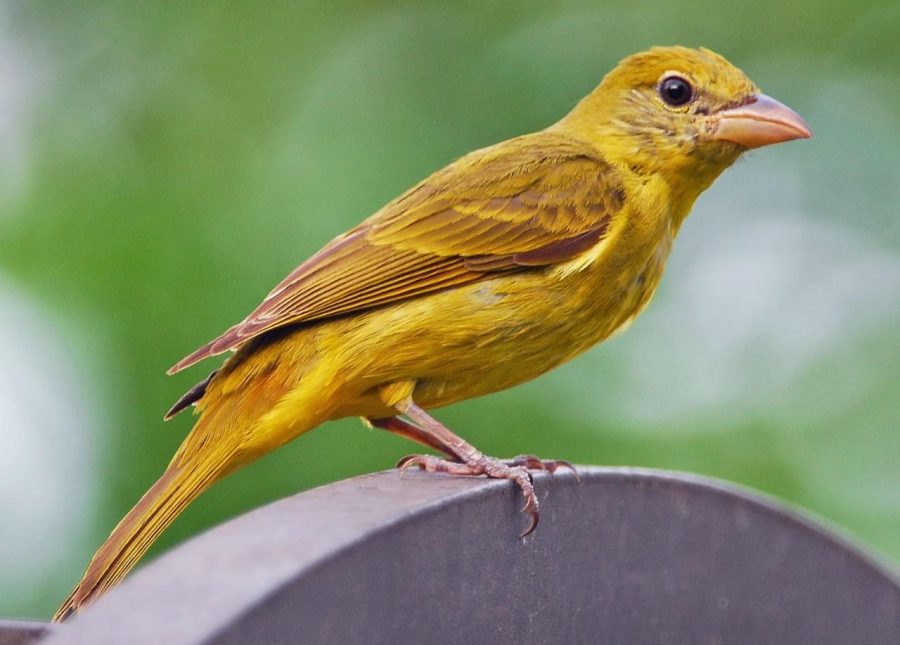
Summer Tanagers are spotted in Kentucky during the breeding season, from mid-April to mid-November, and are recorded in 16% of checklists during this period.
Male Summer Tanagers display bright red plumage and possess large, chunky beaks. Females and juveniles, on the other hand, exhibit mainly yellow coloration with hints of green on their backs.
Scientific name: Piranga rubra
Size: 6.7 inches (17 cm)
Weight: 1.1 ounce (30 g)
Summer Tanagers breed in southern and eastern states before migrating to Central and South America for winter.
These birds can be found in open woodlands, where they feed on bees and wasps mid-flight. They catch their prey and eliminate the stingers by beating them against branches before consuming them.
Summer Tanager Song: [Audio recording]
Nests of Summer Tanagers are constructed by females using grass and other plant materials toward the end of overhanging branches. The nests are not tightly constructed but can hold around four eggs. Incubation lasts approximately ten days, and the young fledge after a further ten days.
To attract Summer Tanagers to your backyard, provide berry bushes and fruit trees.
Fun fact: Young Scarlet Tanagers continue to be fed by their parents for an additional three weeks after leaving the nest, as they are still not proficient fliers during that period.
7. White-eyed Vireo
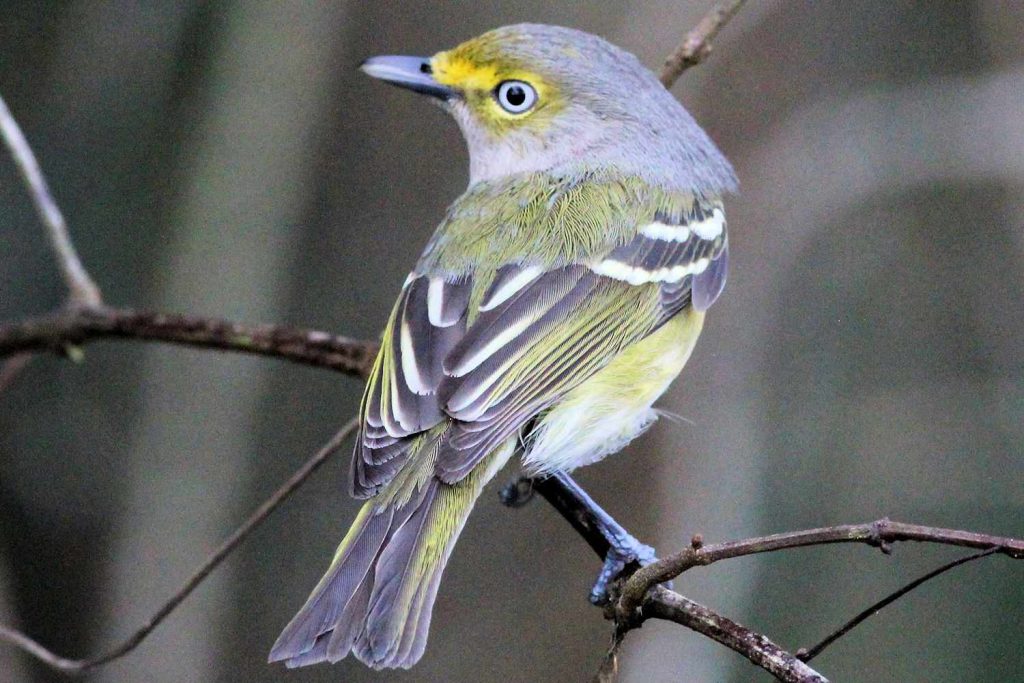
White-eyed Vireos spend the breeding season in Kentucky and are primarily observed from April to October, appearing in 13% of summer checklists.
These birds feature a gray head with yellow coloring around their forehead and striking white eyes. They possess white chests and throats, yellow sides, greenish backs with darker wings, and two white wingbars.
Scientific name: Vireo griseus
Size: 4.3-5.1 inches (11-13 cm)
Weight: 0.3-0.5 ounces (10-14 g)
Wingspan: 6.7 inches (17 cm)
White-eyed Vireos spend the summer across southeastern United States, often concealed within thickets. Some populations near the coast remain resident year-round, while others winter along the southeast coast of Mexico and the Caribbean.
These birds can be found in overgrown pastures, brambles, and similar habitats, where they feed on insects, flies, and spiders. They also incorporate berries into their diet during winter.
White-eyed Vireo Song: [Audio recording]
Nests of White-eyed Vireos are suspended from branches within shrubs. They initially form the structure using spiders’ webs, which is then reinforced with leaves, bark, and plant materials. The nest resembles a hanging cup.
These birds lay around four eggs, with an incubation period of two weeks, and the young leave the nest after approximately ten days.
Fun Fact: In winter, both male and female White-eyed Vireos produce songs, but during spring and summer, only the males engage in singing, often persisting from dawn until noon.
8. Baltimore Oriole Female
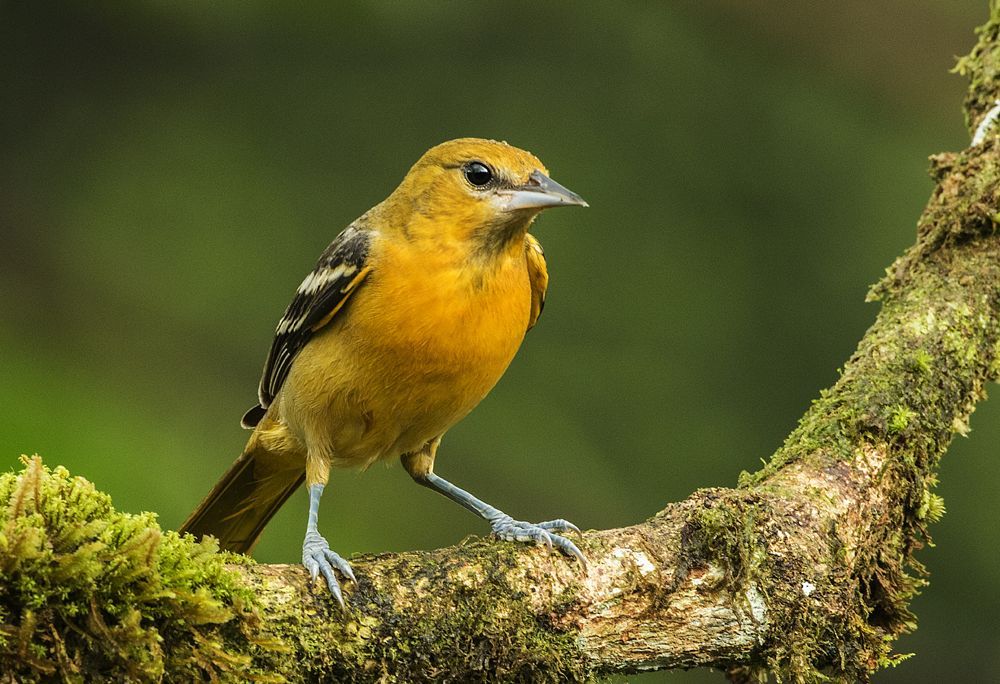
Baltimore Orioles are frequently observed during the breeding season in Kentucky, appearing from April to September in 12% of summer checklists.
These birds serve as colorful indicators of spring in the eastern regions of North America. Adult males display vibrant orange and black plumage, with white wingbars on their black wings.
Scientific name: Icterus galbula
Size: 6.7-7.5 inches (17-19 cm)
Weight: 1.1-1.4 ounces (30-40 g)
Wingspan: 9.1-11.8 inches (23-30 cm)
Baltimore Orioles breed in Eastern and Central States, including parts of central-southern Canadian provinces and the southern border with the US.
During winter, Baltimore Orioles migrate to Florida, Central America, and the Caribbean, often departing as early as July.
These birds can be found high up in open woodlands, along riverbanks, and forest edges, where they forage on insects and fruit. They also frequently visit parks and backyards.
Baltimore Oriole sounds: [Audio recording]
To attract Baltimore Orioles to your backyard, provide halved oranges on platform feeders or hang them from trees. Oriole feeders filled with sugar water can also be used. Planting fruiting and nectar-producing plants such as raspberries, crab apples, and trumpet vines is recommended.
Fun Fact: Baltimore Orioles construct impressive hanging nests woven from various fibers.
9. Yellow-throated Warbler

Yellow-throated Warblers are observed in Kentucky during the breeding season, appearing in 7% of summer checklists.
These warblers exhibit gray and white plumage with black stripes and vibrant yellow throats. When viewed from below, their bellies and tails appear white. Females and juveniles tend to have paler coloration.
Scientific name: Setophaga dominica
Size: 5.1-5.5 inches (13-14 cm)
Weight: 0.3-0.4 ounces (9-11 g)
Wingspan: 8.3 inches (21 cm)
Yellow-throated Warblers breed across the southeastern United States and spend winters in Florida, the Caribbean, and along the Gulf Coast into Central America. Some
individuals may remain resident year-round in Florida.
These warblers are often found at the top of pine trees, foraging for insects. However, during migration, they may forage at lower levels.
Yellow-throated Warbler Song: [Audio recording]
Nests of Yellow-throated Warblers are constructed within Spanish moss hanging from tree branches. The nests are built by weaving grass, weeds, and moss into a cup shape. They lay around four eggs, which hatch after approximately two weeks.
To attract Yellow-throated Warblers, maintain native plants and unkept areas in your backyard.
Fun Fact: Yellow-throated Warblers have experienced an increase in population over recent years, with a 50% growth since 1966, after a decline in numbers and range shrinkage.
10. Female Scarlet Tanager
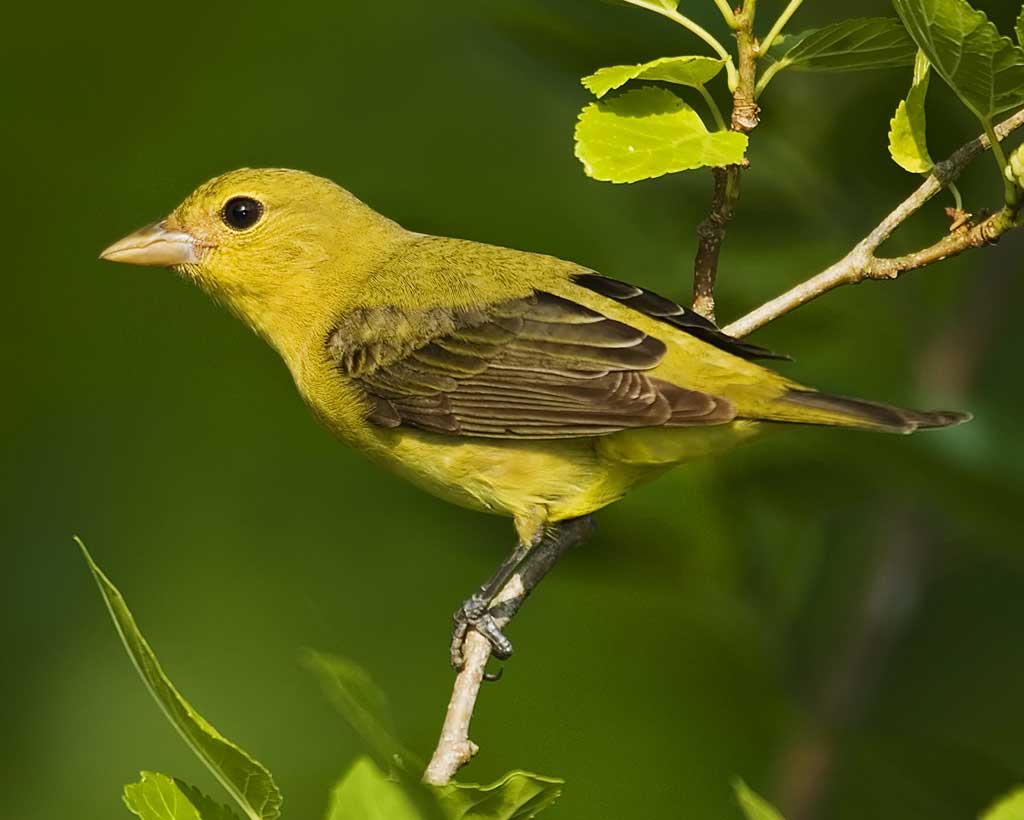
Scarlet Tanagers spend the summer in Kentucky and appear in 9% of checklists from April to November.
Female Scarlet Tanagers display yellow plumage with darker wings and tails, similar to post-molting males.
Scientific name: Piranga olivacea
Size: 6.3-6.7 inches (16-17 cm)
Weight: 0.8-1.3 ounces (23-38 g)
Wingspan: 9.8-11.4 inches (25-29 cm)
During summer, Scarlet Tanagers breed in eastern forests before migrating to western South America. They can be observed in southeastern states during migration.
These birds often stay high in the forest canopy, making them challenging to spot. However, flashes of red can be seen as they walk along branches in search of insects.
Scarlet Tanager Song: [Audio recording]
Nests of Scarlet Tanagers are constructed by females using loosely woven twigs, grass, and plant materials. The inside is lined with soft grass, pine needles, and other soft materials. They lay approximately four eggs, with an incubation period of two weeks, and the young fledge after around two weeks.
To attract Scarlet Tanagers, plant berry-producing plants such as blackberries, raspberries, huckleberries, juneberries, serviceberries, mulberries, strawberries, and chokeberries.
Fun Fact: Male Scarlet Tanagers engage in singing battles and occasional physical fights during courtship.
11. American Redstart
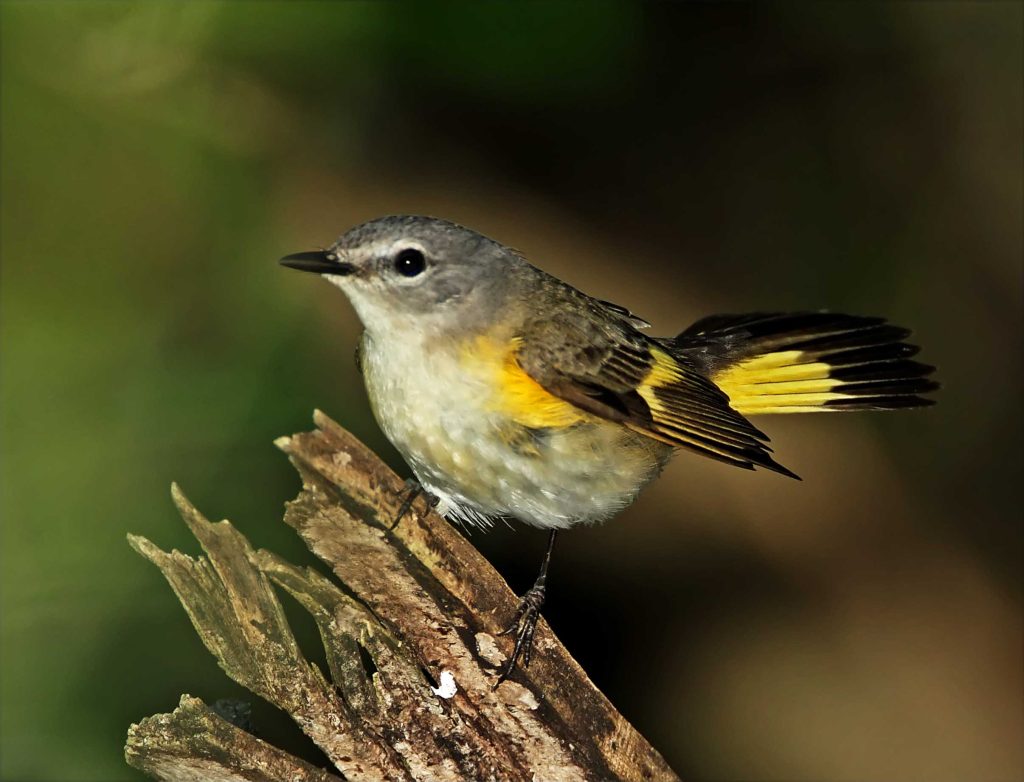
American Redstarts can be observed in Kentucky during the breeding season, appearing in 9% of summer checklists.
These small warblers display black plumage with vibrant orange patches on their wings, tail, and sides. Females have more subdued coloring with gray and yellow tones.
Scientific name: Setophaga ruticilla
Size: 4.3-5.1 inches (11-13 cm)
Weight: 0.3-0.4 ounces (9-11 g)
Wingspan: 6.3-7.9 inches (16-20 cm)
American Redstarts breed in eastern North America and parts of Canada before migrating to Central and South America for winter.
They can often be found in forest edges, open woodlands, and shrubby habitats, where they actively flick their wings and tails while foraging for insects.
American Redstart Song: [Audio recording]
Nests of American Redstarts are constructed by females in the understory of deciduous or mixed forests. They are cup-shaped and built from fine grasses, bark strips, and plant fibers. The females lay 3-5 eggs, and the incubation period lasts about two weeks.
To attract American Redstarts, provide a variety of insects and maintain a diverse habitat with trees and shrubs.
Fun Fact: Male American Redstarts perform a unique “moth dance” during courtship, where they spread their wings and tail to display their vibrant plumage.
12. Orchard Oriole
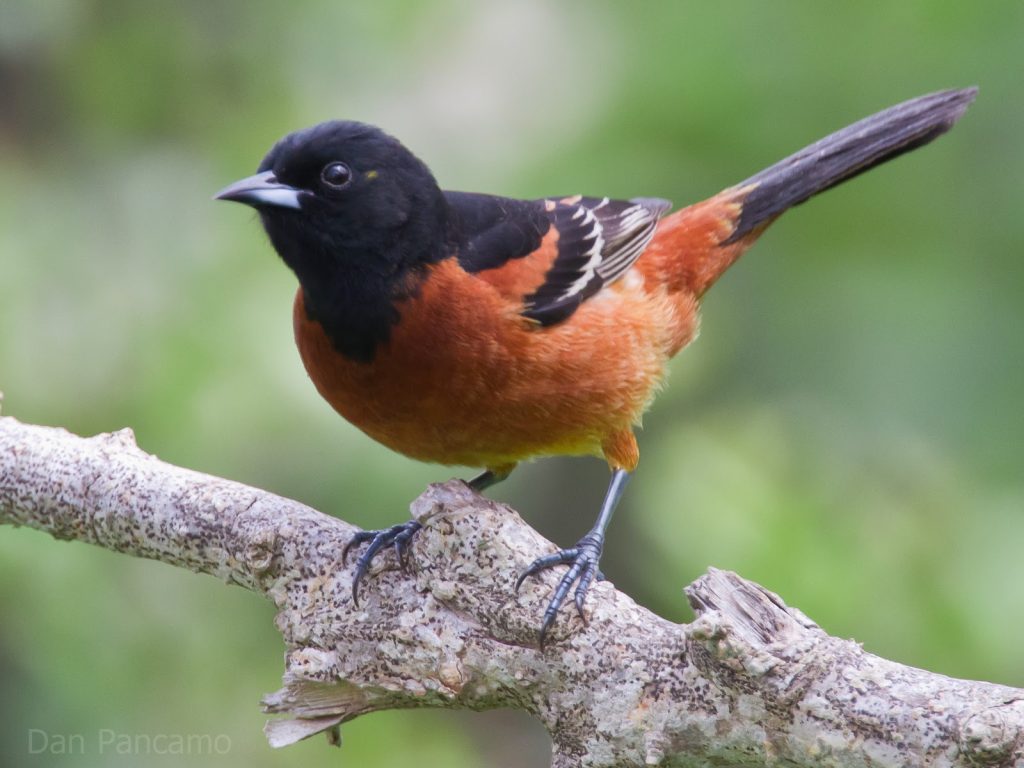
Orchard Orioles can be spotted in Kentucky during the breeding season, appearing in 8% of summer checklists.
Male Orchard Orioles exhibit bright orange plumage with black wings, tail, and throat. Females have olive-green coloration on their upperparts and yellowish underparts.
Scientific name: Icterus spurius
Size: 6.3-7.1 inches (16-18 cm)
Weight: 0.7-1.0 ounces (20-28 g)
Wingspan: 9.8-11.0 inches (25-28 cm)
Orchard Orioles breed across eastern and central United States, as well as parts of Mexico and Central America. They migrate to wintering grounds in Central and northern South America.
These birds can be found in open woodlands, orchards, and edges of forests, where they feed on insects, nectar, and fruit.
Orchard Oriole Song: [Audio recording]
Nests of Orchard Orioles are constructed by females using fine grasses, plant fibers, and other materials. The nests are usually located in deciduous trees, often near the end of branches. They lay 3-6 eggs, which hatch after approximately two weeks.
To attract Orchard Orioles, provide a source of fruit, such as oranges or berries, and maintain a habitat with suitable nesting sites.
Fun Fact: Orchard Orioles are the smallest species of oriole in North America.
13. Yellow-throated Vireo
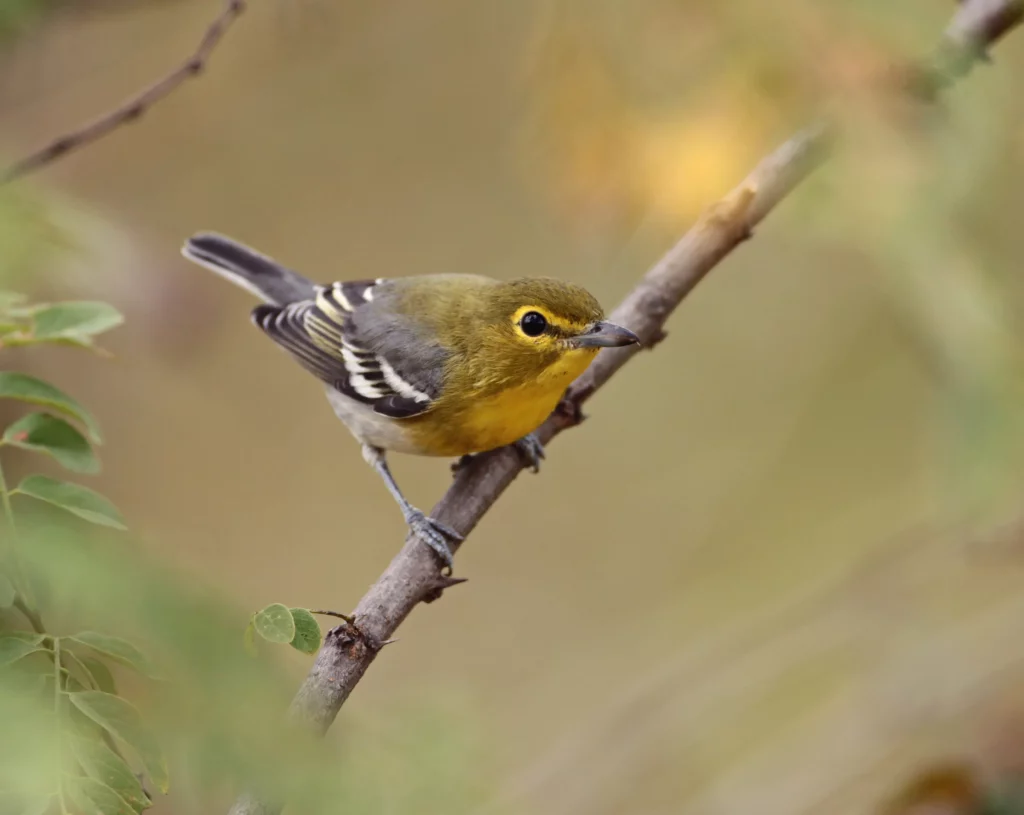
Yellow-throated Vireos can be observed in Kentucky during the breeding season, appearing in 7% of summer checklists.
These medium-sized songbirds display olive-green upperparts, bright yellow underparts, and a distinct yellow throat.
Scientific name: Vireo flavifrons
Size: 5.1-5.5 inches (13-14 cm)
Weight: 0.4-0.5 ounces (11-14 g)
Wingspan: 8.3-9.1 inches (21-23 cm)
Yellow-throated Vireos breed across eastern and central United States and parts of southern Canada. They migrate to wintering grounds in Mexico, Central America, and the Caribbean.
These birds can be found in deciduous forests, where they forage for insects among the foliage. They are known for their distinctively loud and persistent songs.
Yellow-throated Vireo Song: [Audio recording]
Nests of Yellow-throated Vireos are suspended from the forks of branches within deciduous trees. The nests are cup-shaped and built using grasses, bark, and spider silk. They lay 3-5 eggs, which hatch after approximately two weeks.
To attract Yellow-throated Vireos, provide a variety of insects and maintain a suitable forested habitat.
Fun Fact: Male Yellow-throated Vireos are diligent singers, often singing for extended periods throughout the day.
14. Prairie Warbler
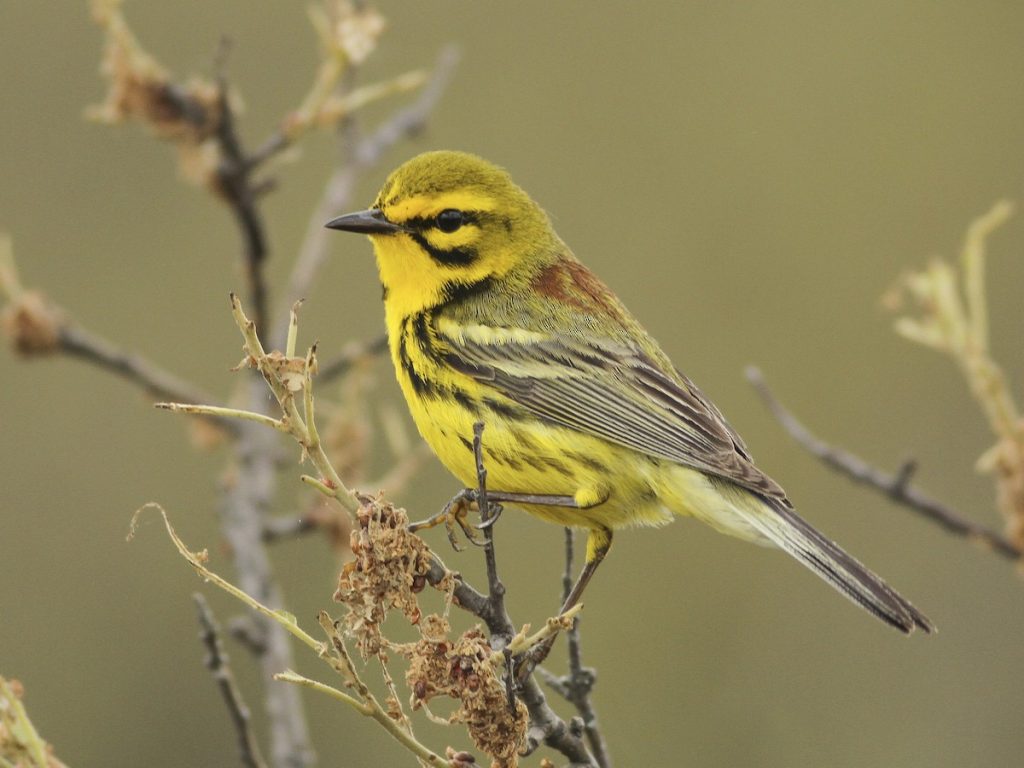
Prairie Warblers can be spotted in Kentucky during the breeding season, appearing in 6% of summer checklists.
These small, vibrant warblers have yellow underparts, olive-green upperparts, and distinctive black streaks on their sides.
Scientific name: Setophaga discolor
Size: 4.3-4.7 inches (11-12 cm)
Weight: 0.3-0.4 ounces (9-11 g)
Wingspan: 7.1-7.9 inches (18-20 cm)
Prairie Warblers breed in eastern and southeastern United States, as well as parts of Canada. They migrate to wintering grounds in the Caribbean and Central America.
These birds prefer early successional habitats, such as shrublands, open woods, and regenerating forests. They feed on insects and spiders.
Prairie Warbler Song: [Audio recording]
Nests of Prairie Warblers are cup-shaped and built close to the ground in shrubs or small trees. They are constructed using grasses, bark strips, and plant fibers. The females lay 3-5 eggs, and the incubation period lasts around 10-12 days.
To attract Prairie Warblers, provide a mix of shrubs and maintain habitats with sufficient cover and insect abundance.
Fun Fact: Prairie Warblers are known for their “insect-like” buzzing songs, often performed while perched at the top of shrubs.
15. Prothonotary Warbler

Prothonotary Warblers can be observed in Kentucky during the breeding season, appearing in 6% of summer checklists.
These small, bright yellow warblers have blue-gray wings and a distinct orange-yellow head.
Scientific name: Protonotaria citrea
Size: 4.3-5.1 inches (11-13 cm)
Weight: 0.3-0.4 ounces (9-11 g)
Wingspan: 6.7-7.9 inches (17-20 cm)
Prothonotary Warblers breed in wet bottomland forests and swamps across eastern and southeastern United States, as well as parts of Canada. They migrate to wintering grounds in Central and northern South America.
These birds forage for insects by hopping along branches, tree trunks, and among vegetation near water bodies.
Prothonotary Warbler Song: [Audio recording]
Nests of Prothonotary Warblers are placed in tree cavities or nest boxes near water. The nests are cup-shaped and built using moss, bark, and plant fibers. The females lay 4-7 eggs, which hatch after approximately 12-15 days.
To attract Prothonotary Warblers, provide nest boxes near water bodies and maintain suitable forested habitats.
Fun Fact: Prothonotary Warblers are the only warblers in eastern North America that use natural cavities for nesting.
16. Yellow Warbler
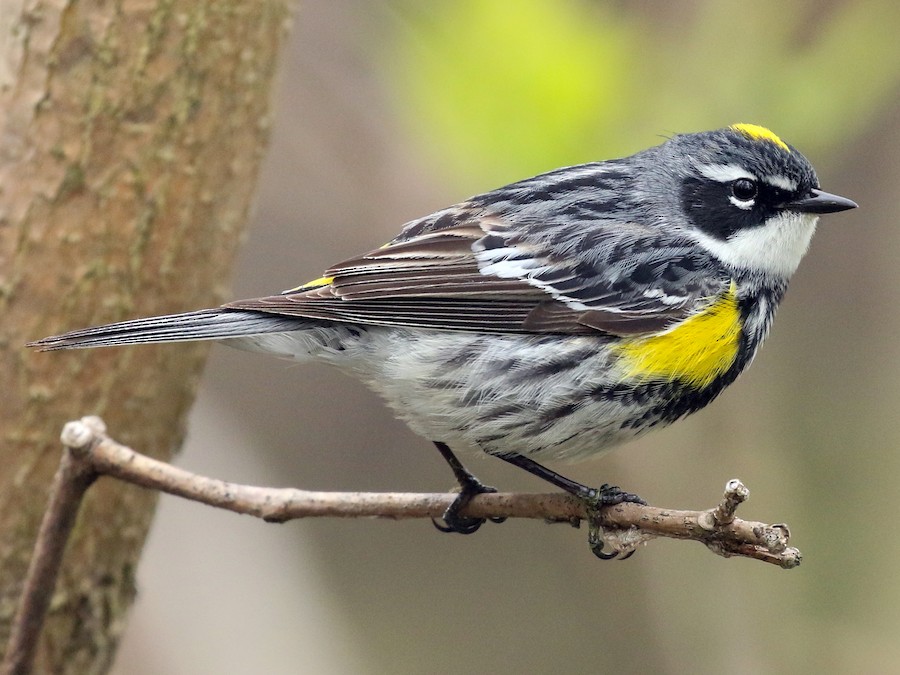
Yellow Warblers can be spotted in Kentucky during the breeding season, appearing in 6% of summer checklists.
These small, bright yellow warblers have olive-green upperparts and a reddish streaking on their breasts.
Scientific name: Setophaga petechia
Size: 4.7 inches (12 cm)
Weight: 0.3-0.4 ounces (9-11 g)
Wingspan: 6.7-7.5 inches (17-19 cm)
Yellow Warblers breed across North America, including parts of Canada and Alaska. They migrate to wintering grounds in Central and northern South America.
These birds can be found in various habitats, including wetlands, forests, and shrubby areas, where they forage for insects.
Yellow Warbler Song: [Audio recording]
Nests of Yellow Warblers are cup-shaped and built in shrubs or small trees using grasses, plant fibers, and other materials. The females lay 3-5 eggs, and the incubation period lasts around 10-12 days.
To attract Yellow Warblers, provide a mix of shrubby and wooded areas with suitable nesting sites.
Fun Fact: Yellow Warblers are known for their sweet, musical songs that are often described as a repetition of “sweet-sweet-I’m-so-sweet.”
17. Hooded Warbler

Hooded Warblers can be observed in Kentucky during the breeding season, appearing in 5% of summer checklists.
These small warblers have bright yellow underparts and olive-green upperparts. Males possess a black hood-like mask on their heads.
Scientific name: Setophaga citrina
Size: 4.7-5.1 inches (12-13 cm)
Weight: 0.3-0.4 ounces (9-11 g)
Wingspan: 7.1-7.9 inches (18-20 cm)
Hooded Warblers breed in eastern United States, including parts of Canada. They migrate to wintering grounds in Central America and the Caribbean.
These birds prefer deciduous forests, particularly areas with dense undergrowth and shrubby habitats. They forage for insects on the ground and low vegetation.
Hooded Warbler Song: [Audio recording]
Nests of Hooded Warblers are typically placed on or near the ground in leaf litter or shrubs. The nests are built using grasses, leaves, and plant fibers. The females lay 3-5 eggs, which hatch after approximately 12-14 days.
To attract Hooded Warblers, maintain dense understory vegetation and suitable habitat conditions.
Fun Fact: Hooded Warblers have a unique feeding behavior called “hover-gleaning,” where they hover momentarily while foraging for insects.
18. Dickcissel
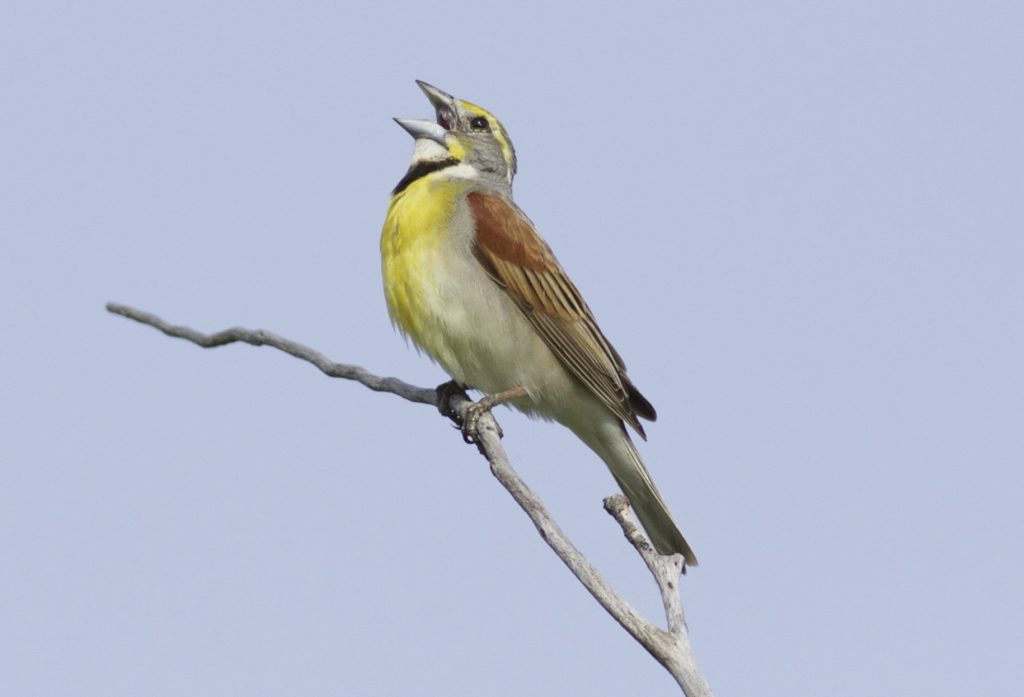
Dickcissels can be spotted in Kentucky during the breeding season, appearing in 5% of summer checklists.
These medium-sized grassland birds have a distinct appearance with bright yellow chests, gray-brown upperparts, and black streaks on their backs.
Scientific name: Spiza americana
Size: 5.9-6.7 inches (15-17 cm)
Weight: 0.9-1.0 ounces (25-28 g)
Wingspan: 10.6-11.8 inches (27-30 cm)
Dickcissels breed across central and eastern United States, as well as parts of Canada. They migrate to wintering grounds in Central and northern South America.
These birds prefer grassland habitats, including prairies, meadows, and agricultural fields, where they feed on seeds and insects.
Dickcissel Song: [Audio recording]
Nests of Dickcissels are built on the ground, concealed within tall grasses or agricultural fields. The nests are cup-shaped and constructed using grasses and plant fibers. The females lay 3-5 eggs, and the incubation period lasts around 11-13 days.
To attract Dickcissels, maintain grassland habitats with ample seed-producing plants and suitable nesting areas.
Fun Fact: Male Dickcissels are known for their distinctive “dick-dick-ciss-ciss” song, which gives them their common name.
19. Blue-winged Warbler
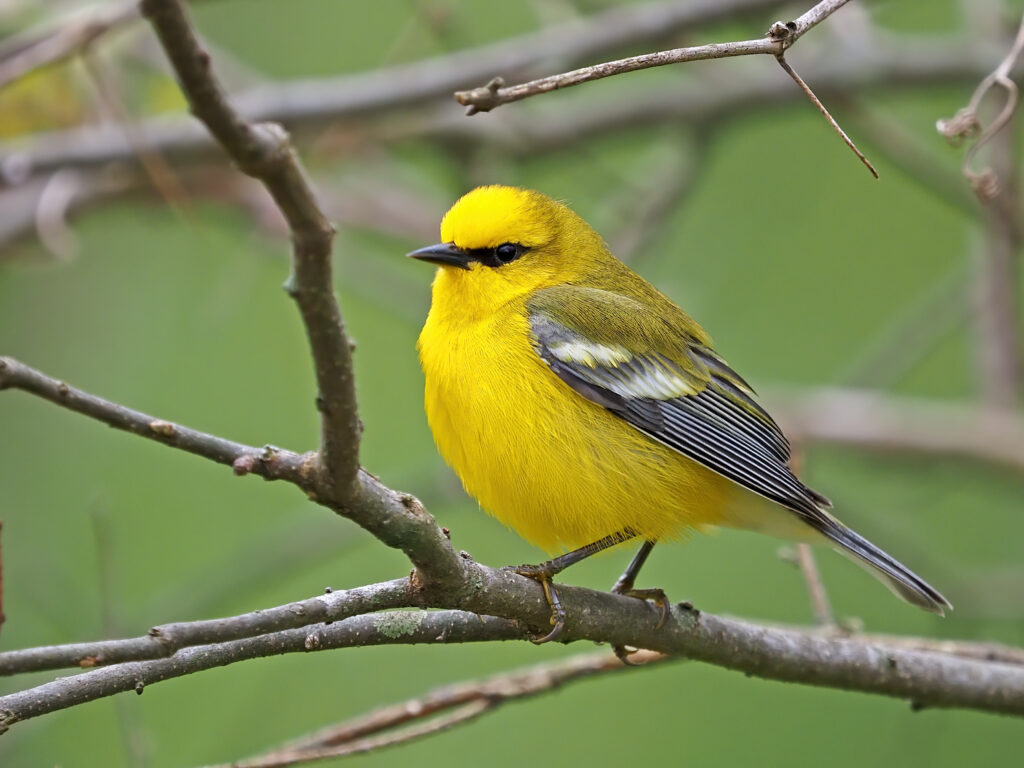
Blue-winged Warblers can be observed in Kentucky during the breeding season, appearing in 4% of summer checklists.
These small warblers have yellow underparts, grayish-blue wings, and a distinct white eye-ring.
Scientific name: Vermivora cyanoptera
Size: 4.7-5.1 inches (12-13 cm)
Weight: 0.3-0.4 ounces (9-11 g)
Wingspan: 7.5-8.3 inches (19-21 cm)
Blue-winged Warblers breed across eastern and central United States and parts of southern Canada. They migrate to wintering grounds in Central America and the Caribbean.
These birds can be found in open woodlands, scrubby habitats, and regenerating forests, where they forage for insects.
Blue-winged Warbler Song: [Audio recording]
Nests of Blue-winged Warblers are typically placed on or near the ground in shrubs or small trees. The nests are built using grasses, bark strips, and plant fibers. The females lay 3-7 eggs, which hatch after approximately 10-12 days.
To attract Blue-winged Warblers, maintain suitable habitat conditions with sufficient understory vegetation.
Fun Fact: Blue-winged Warblers often hybridize with Golden-winged Warblers, resulting in a unique hybrid species called the Brewster’s Warbler.
20. Yellow-rumped Warbler

Yellow-rumped Warblers can be spotted in Kentucky during migration, appearing in 4% of checklists during this time.
These medium-sized warblers display a combination of yellow, white, and gray plumage, with yellow patches on their sides and rumps.
Scientific name: Setophaga coronata
Size: 5.1-5.5 inches (13-14 cm)
Weight: 0.4-0.5 ounces (12-13 g)
Wingspan: 7.9-9.1 inches (20-23 cm)
Yellow-rumped Warblers breed in coniferous forests across North America, including parts of Canada and Alaska. They migrate to wintering grounds in the southern United States, Mexico, and Central America.
These birds are versatile foragers and can be found in various habitats, including forests, woodlands, and even open areas during migration.
Yellow-rumped Warbler Song: [Audio recording]
Nests of Yellow-rumped Warblers are cup-shaped and built in coniferous trees using twigs, grasses, and bark strips. The females lay 3-6 eggs, which hatch after approximately 12-13 days.
To spot Yellow-rumped Warblers during migration, visit areas with suitable habitat and a diversity of trees.
Fun Fact: Yellow-rumped Warblers are known for their ability to digest waxy berries, such as those of the wax myrtle and bayberry, which are not typically consumed by other warbler species.
21. Western Meadowlark
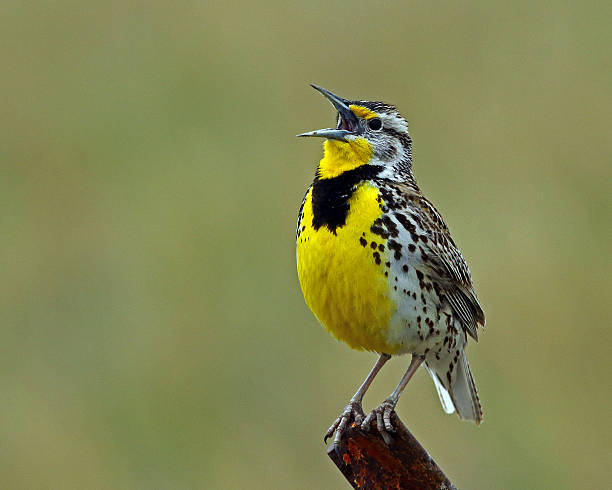
Western Meadowlarks can be found in Kentucky during migration, appearing in 3% of checklists at this time.
These medium-sized songbirds have yellow underparts with black V-shaped markings on their chests. They have brownish upperparts with streaks and a distinctive yellow throat.
Scientific name: Sturnella neglecta
Size: 7.5-10.2 inches (19-26 cm)
Weight: 3.5-5.0 ounces (99-142 g)
Wingspan: 15.8-16.9 inches (40-43 cm)
Western Meadowlarks breed in grasslands and prairies across western North America. They migrate to wintering grounds in the southern United States and northern Mexico.
These birds can be found foraging on the ground, searching for insects, seeds, and small vertebrates.
Western Meadowlark Song: [Audio recording]
Nests of Western Meadowlarks are built on the ground in grassy areas. The nests are cup-shaped and constructed with grasses and other plant materials. The females lay 2-7 eggs, which hatch after approximately 13-15 days.
To spot Western Meadowlarks during migration, visit open grassy areas and listen for their distinctive melodic song.
Fun Fact: Western Meadowlarks are the state bird of six U.S. states, including Kansas, Montana, Nebraska, North Dakota, Oregon, and Wyoming.
22. Black-throated Green Warbler
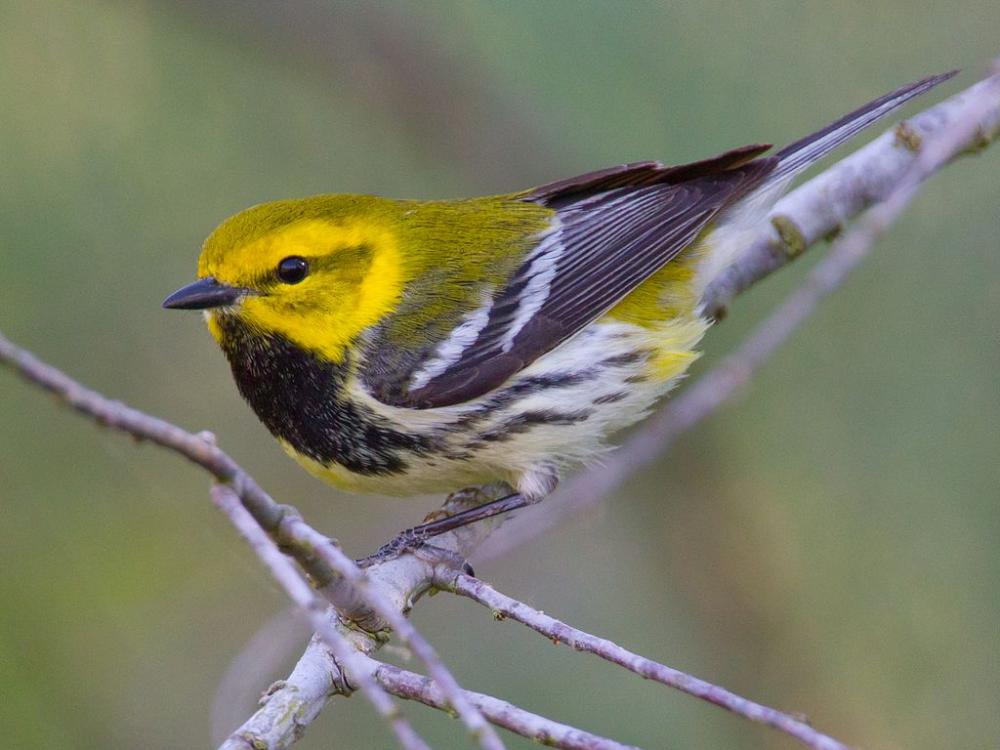
Black-throated Green Warblers can be observed in Kentucky during migration, appearing in 3% of checklists at this time.
These small warblers have olive-green upperparts, bright yellow underparts, and a distinct black throat patch.
Scientific name: Setophaga virens
Size: 4.7-5.1 inches (12-13 cm)
Weight: 0.3-0.4 ounces (9-11 g)
Wingspan: 7.5-8.3 inches (19-21 cm)
Black-throated Green Warblers breed in coniferous and mixed forests across northeastern North America and parts of Canada. They migrate to wintering grounds in the Caribbean and Central America.
These birds forage actively in the tree canopy, searching for insects and spiders.
Black-throated Green Warbler Song: [Audio recording]
Nests of Black-throated Green Warblers are cup-shaped and built in coniferous trees using moss, twigs, and bark strips. The females lay 3-5 eggs, which hatch after approximately 11-12 days.
To spot Black-throated Green Warblers during migration, visit wooded areas with coniferous trees.
Fun Fact: Male Black-throated Green Warblers have an acrobatic flight display, where they hover and fan their tails to attract mates.
23. Magnolia Warbler
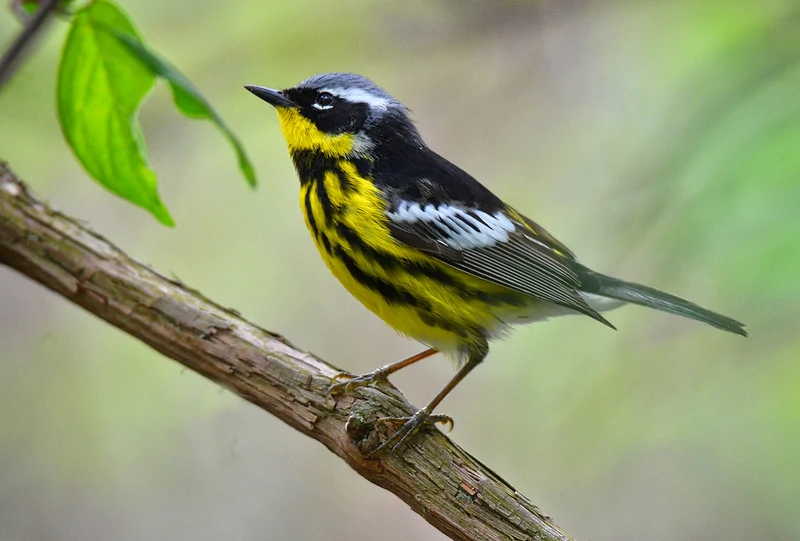
Magnolia Warblers can be spotted in Kentucky during migration, appearing in 3% of checklists at this time.
These small warblers have black upperparts with white wing patches and bright yellow underparts with black streaking.
Scientific name: Setophaga magnolia
Size: 4.3-5.1 inches (11-13 cm)
Weight: 0.3-0.4 ounces (9-11 g)
Wingspan: 7.5-8.3 inches (19-21 cm)
Magnolia Warblers breed in boreal forests across Canada and Alaska. They migrate to wintering grounds in the Caribbean and Central America.
These birds forage in the upper tree canopy, gleaning insects from leaves and branches.
Magnolia Warbler Song: [Audio recording]
Nests of Magnolia Warblers are cup-shaped and built on or near the ground in mossy areas. The nests are constructed with grasses, moss, and other plant materials. The females lay 4-5 eggs, which hatch after approximately 10-12 days.
To spot Magnolia Warblers during migration, visit wooded areas with a mix of deciduous and coniferous trees.
Fun Fact: Despite its name, the Magnolia Warbler does not have a significant association with magnolia trees. It was named after a French botanist, Pierre Magnol.
24. Palm Warbler

Palm Warblers can be observed in Kentucky during migration, appearing in 3% of checklists at this time.
These small warblers have brownish upperparts with streaks, yellow underparts, and a distinctive rusty-colored cap.
Scientific name: Setophaga palmarum
Size: 4.7-5.1 inches (12-13 cm)
Weight: 0.3-0.4 ounces (9-11 g)
Wingspan: 7.5-8.3 inches (19-21 cm)
Palm Warblers breed in the boreal forests of Canada and Alaska. They migrate to wintering grounds in the southeastern United States, the Caribbean, and Central America.
These birds often forage on the ground, wagging their tails and searching for insects and seeds.
Palm Warbler Song: [Audio recording]
Nests of Palm Warblers are built on the ground in mossy areas or under low vegetation. The nests are cup-shaped and constructed with grasses, moss, and plant fibers. The females lay 4-5 eggs, which hatch after approximately 12-13 days.
To spot Palm Warblers during migration, look for them in open woodland areas or along the edges of wetlands.
Fun Fact: Palm Warblers are one of the few warbler species that frequently wag their tails, a behavior that helps distinguish them from similar-looking warblers.
25. Nashville Warbler
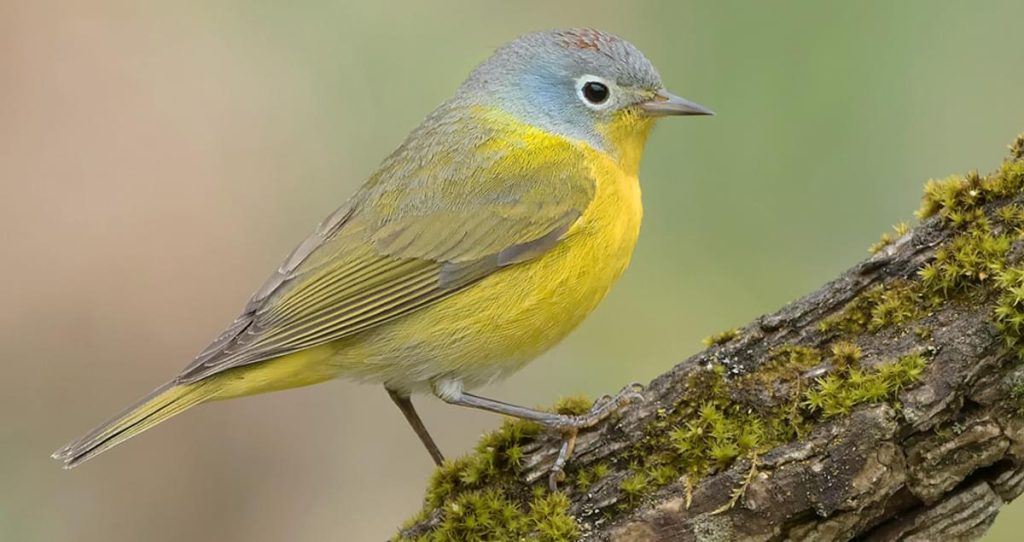
Nashville Warblers can be found in Kentucky during migration, appearing in 2% of checklists at this time.
These small warblers have olive-green upperparts, yellow underparts, and a distinct white eye-ring.
Scientific name: Leiothlypis ruficapilla
Size: 4.3-4.7 inches (11-12 cm)
Weight: 0.3-0.4 ounces (9-11 g)
Wingspan: 7.1-7.5 inches (18-19 cm)
Nashville Warblers breed in coniferous forests across Canada and parts of the northern United States. They migrate to wintering grounds in Mexico and Central America.
These birds forage actively in the tree canopy, searching for insects and spiders.
Nashville Warbler Song: [Audio recording]
Nests of Nashville Warblers are cup-shaped and built close to the ground in shrubs or small trees. The nests are constructed with grasses, moss, and other plant materials. The females lay 4-5 eggs, which hatch after approximately 10-12 days.
To spot Nashville Warblers during migration, visit wooded areas with coniferous trees.
Fun Fact: Nashville Warblers were named after Nashville, Tennessee, where the species was first collected and described.
26. Cape May Warbler

Cape May Warblers can be observed in Kentucky during migration, appearing in 2% of checklists at this time.
These small warblers have olive-green upperparts, yellow underparts with streaking, and a distinctive rusty-colored patch on their cheeks.
Scientific name: Setophaga tigrina
Size: 4.3-4.7 inches (11-12 cm)
Weight: 0.3-0.4 ounces (9-11 g)
Wingspan: 7.5-8.3 inches (19-21 cm)
Cape May Warblers breed in the boreal forests of Canada and Alaska. They migrate to wintering grounds in the Caribbean and northern South America.
These birds forage actively in the tree canopy, probing flowers for nectar and capturing insects.
Cape May Warbler Song: [Audio recording]
Nests of Cape May Warblers are cup-shaped and built on the outer branches of coniferous trees. The nests are constructed with twigs, grasses, and plant fibers. The females lay 4-5 eggs, which hatch after approximately 11-12 days.
To spot Cape May Warblers during migration, visit wooded areas with a mix of coniferous and deciduous trees.
Fun Fact: The Cape May Warbler’s unique feeding habit involves extracting nectar from flowers using its specialized tongue, similar to a hummingbird’s feeding technique.
27. Wilson’s Warbler
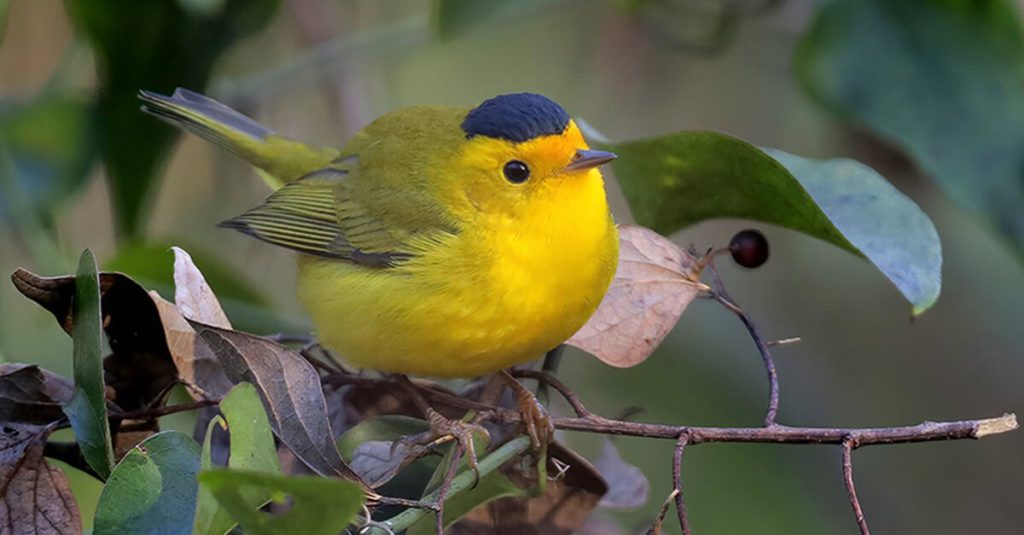
Wilson’s Warblers can be spotted in Kentucky during migration, appearing in 2% of checklists at this time.
These small warblers have bright yellow underparts, olive-green upperparts, and a distinctive black cap.
Scientific name: Cardellina pusilla
Size: 4.3-4.7 inches (11-12 cm)
Weight: 0.3-0.4 ounces (9-11 g)
Wingspan: 7.5-8.3 inches (19-21 cm)
Wilson’s Warblers breed in the coniferous forests of western North America, including parts of Canada and Alaska. They migrate to wintering grounds in Mexico and Central America.
These birds forage actively in the understory and low vegetation, searching for insects and spiders.
Wilson’s Warbler Song: [Audio recording]
Nests of Wilson’s Warblers are cup-shaped and built close to the ground in shrubs or small trees. The nests are constructed with grasses, moss, and other plant materials. The females lay 4-6 eggs, which hatch after approximately 10-12 days.
To spot Wilson’s Warblers during migration, look for them in brushy habitats near water sources.
Fun Fact: Wilson’s Warblers are known for their cheerful and fast-paced songs, often described as a series of musical trills.
28. Orange-crowned Warbler
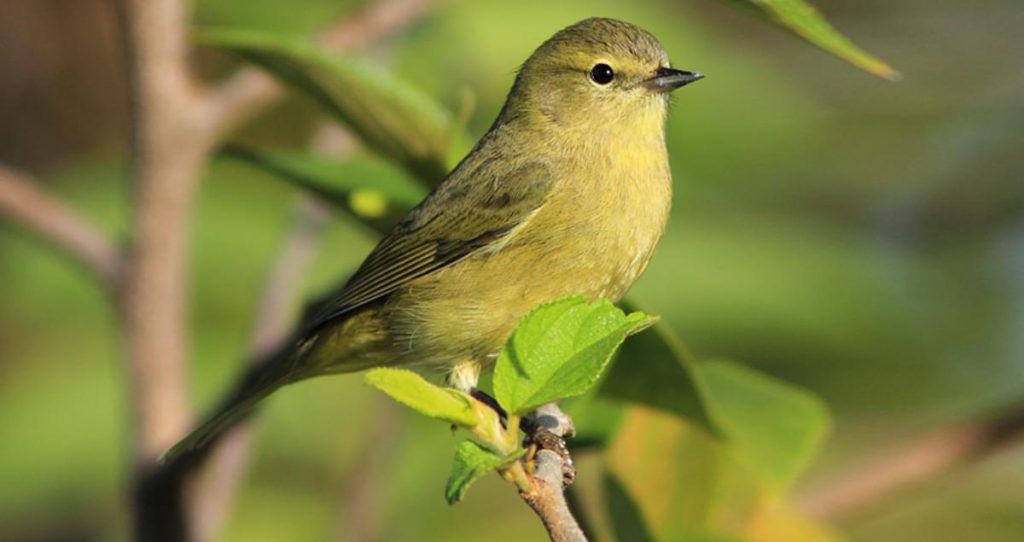
Orange-crowned Warblers can be observed in Kentucky during migration, appearing in 2% of checklists at this time.
These small warblers have olive-green upperparts, dull yellow underparts, and a subtle orange crown patch that is often concealed.
Scientific name: Leiothlypis celata
Size: 4.3-4.7 inches (11-12 cm)
Weight: 0.3-0.4 ounces (9-11 g)
Wingspan: 7.1-7.5 inches (18-19 cm)
Orange-crowned Warblers breed in various habitats across western North America, including coniferous forests, shrubby areas, and riparian zones. They migrate to wintering grounds in the southern United States, Mexico, and Central America.
These birds forage actively in shrubs and low vegetation, searching for insects and spiders.
Orange-crowned Warbler Song: [Audio recording]
Nests of Orange-crowned Warblers are cup-shaped and built close to the ground in shrubs or small trees. The nests are constructed with grasses, moss, and other plant materials. The females lay 3-5 eggs, which hatch after approximately 10-12 days.
To spot Orange-crowned Warblers during migration, visit diverse habitats with ample vegetation cover.
Fun Fact: The orange crown patch of Orange-crowned Warblers is often concealed, and they rarely display it, even during courtship displays.
29. Canada Warbler
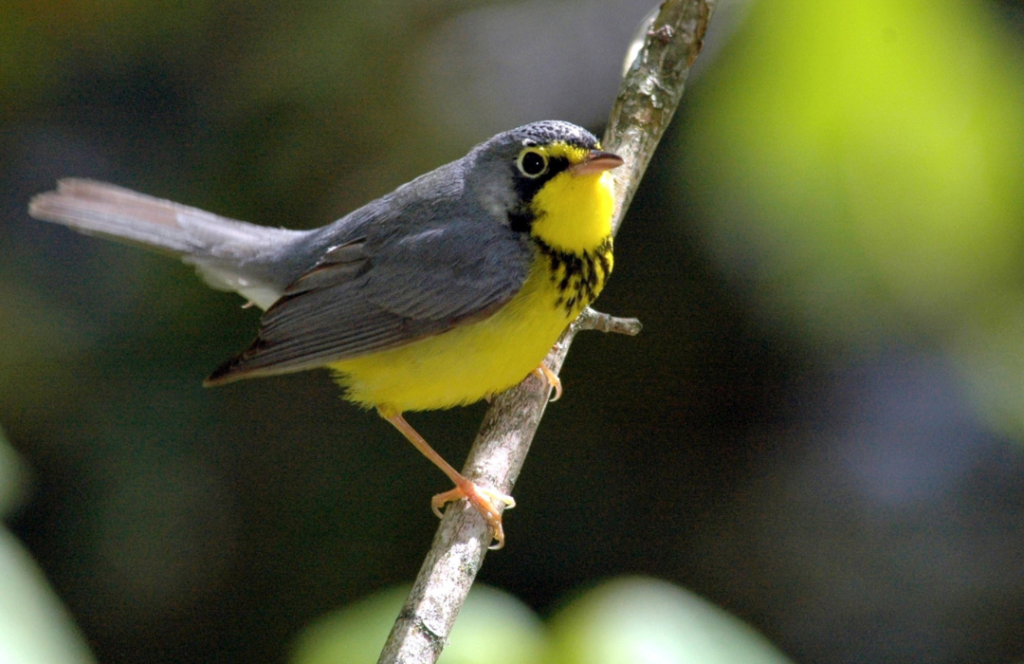
Canada Warblers can be found in Kentucky during migration, appearing in 2% of checklists at this time.
These small warblers have blue-gray upperparts, bright yellow underparts with bold black streaking, and a distinctive necklace-like pattern of black stripes on their breasts.
Scientific name: Cardellina canadensis
Size: 4.3-5.1 inches (11-13 cm)
Weight: 0.3-0.4 ounces (9-11 g)
Wingspan: 7.5-8.3 inches (19-21 cm)
Canada Warblers breed in the boreal forests of Canada and Alaska. They migrate to wintering grounds in northern South America.
These birds forage actively in the understory and low vegetation, searching for insects and spiders.
Canada Warbler Song: [Audio recording]
Nests of Canada Warblers are cup-shaped and built on the ground, hidden among vegetation. The nests are constructed with grasses, moss, and other plant materials. The females lay 3-5 eggs, which hatch after approximately 11-12 days.
To spot Canada Warblers during migration, look for them in mixed forests with dense understory vegetation.
Fun Fact: Canada Warblers have one of the longest migration routes of any warbler species, traveling over 10,000 kilometers from their breeding grounds to their wintering grounds.
There you have it, a comprehensive list of 29 yellow birds you may encounter in Kentucky. Enjoy birdwatching and the vibrant beauty of these avian wonders!
